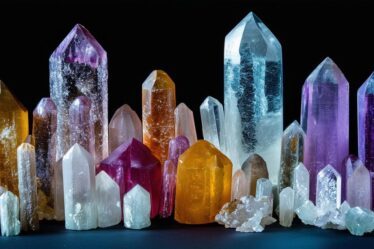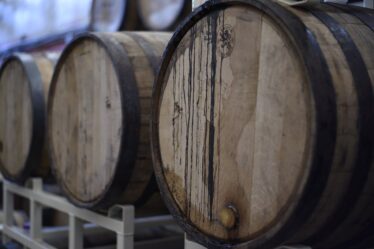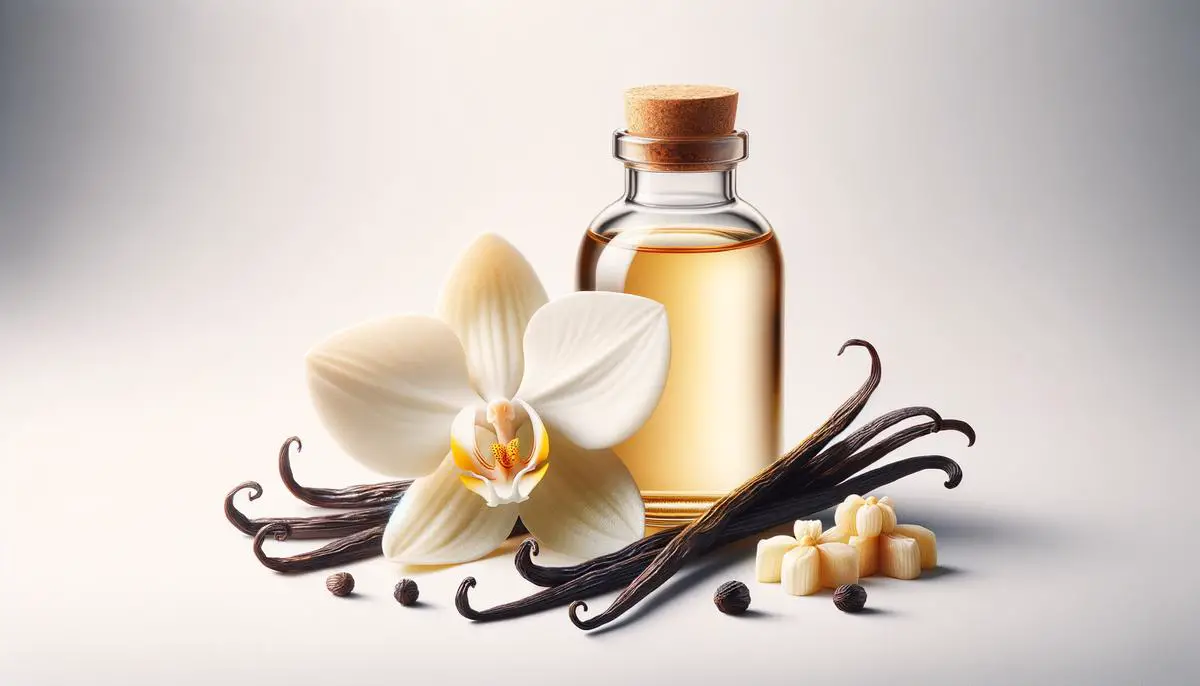
Production and Types of Vanilla Extract
Browsing through aisles lined with numerous varieties of vanilla extract, one can easily notice brands labeled as pure, imitation, or vanilla essence. These descriptors, mandated by FDA standards, serve an informative purpose. Pure vanilla extract must contain at least 35% alcohol with 100g of vanilla beans per liter. This requirement guarantees rich and deep flavors that enhance culinary creations. In contrast, imitation vanilla and vanilla essences typically use synthetic vanillin, hence are less pricey but also less potent in flavor profile.
The creation of pure vanilla extract begins with the flowering of the vanilla orchid, primarily the Vanilla planifolia species. This orchid grows as a vine requiring careful hand pollination, as these flowers bloom for just a single day. Post-pollination, pods take several months to develop into full beans.
Once harvested, curing is the next essential step where beans undergo blanching and are then wrapped in blankets to ferment — a procedure magnifying the vanilla's innate flavors. The traditional methods depend on ambient conditions for air drying, another step that contributes to the development of hundreds of volatile essential oils marking the vanilla's signature taste.
In commercial settings, crushed vanilla beans are mixed with an alcohol and water mixture to draw out the vanilla flavors, a process known as extraction. Traditionally, this might rely on heat to speed interactions but more refined methods, such as cold extraction, slowly extract intricate flavors without compromising them through heat. This ensures those who invest in bottles labeled "pure" get a high-quality product.
Each detail in this prolonged enrichment process justifies why pure vanilla stands as the second most expensive spice in the marketplace, behind only saffron.1 Though often misjudged simply as a baking enhancer, vanilla plays starring roles in various gourmet and home-style recipes.
Imitation vanilla owes its existence to the simplicity of synthetic production. Here, chemistry takes center stage in simulating flavor compounds mostly in mass production of goods where vanilla's tone isn't the sole focus but an ensemble member.
Whether one splurges on single-fold or chooses wallet-friendly artificial imitation, understanding these distinctions reveals a critical layer for crafting palatable masterpieces that resonate flavor with detail and homage to its tropical progenitor: the vanilla orchid.
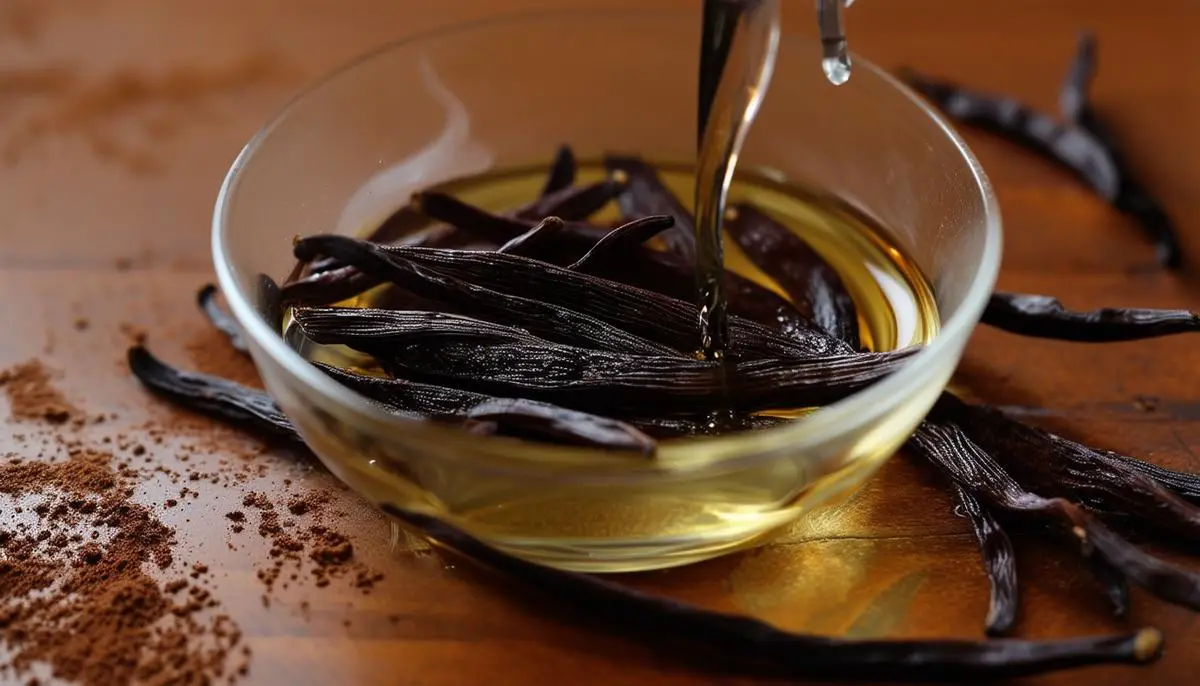
Economic and Ecological Impacts of Vanilla Production
Vanilla cultivation, primarily centered in Madagascar, embodies a significant economic backbone for this nation. Accounting for nearly 80% of the world's vanilla supply, the island's economy is profoundly tethered to the production of this orchid.2 Local inhabitants, often positioned in rural locales, rely on this crop for their livelihoods, with the intricate process of vanilla cultivation providing jobs to thousands. However, the industry is not without its challenges and insights into socio-economic balancing acts.
Among these challenges are the labor practices involved. The labor-intensive nature of vanilla cultivation requires extensive human effort, from the initial hand pollination processes to the exacting harvest. It is, regrettably, not uncommon within some plantations to find that children are part of the workforce. These practices are a reflection of economic desperation and a marker of larger, systemic issues. The prevalence of such labor points to urgent needs for regulation and reform to protect the vulnerable, improve wages, and ensure safer working conditions.
The ecological impacts are equally significant. The vanillin orchid, being native to these tropical environments, demands specific climate conditions, marrying the industry to the fate of local weather patterns such as monsoons. These seasonal storms can wreak havoc on the delicate flowers, potentially devastating an entire year's crop yield in mere hours. The threat of such abrupt climatic events places a strain on the immediate availability of vanilla and stresses the economic stability of those depending on it for income.
In addition to these susceptibilities to weather, the mono-crop culture of vanilla can lead to reduced biodiversity. With large tracts of land dedicated to a single cash crop, there's less room for varied flora and fauna, impacting local ecosystems. Over-reliance on vanilla also makes local economies vulnerable to global market price fluctuations, which can see sharp ups and downs due to changes in demand, supply chain issues, or changes in consumer preference.
Looking towards a sustainable pathway, flourishing interest in responsible consumerism invites potential solutions. For instance, premiums on fair-trade-certified vanilla could provide economic incentives to uphold better labor standards and sustainable farming practices. Internationally-aware purchasing decisions have the potential to partially reform how production impacts both people and environments crucial to the future of vanilla cultivation.
These closely intertwined economic and ecological factors serve as a potent reminder of the intricacies behind the simplicity of vanilla—a flavor ingrained in global cultures. From Madagascar orchards to kitchens worldwide, understanding the journey of vanilla reveals not only an agronomic narrative but echoes a greater call for consciousness in culinary sourcing, turning every purchase of pure vanilla into a possible contribution toward global sustainability efforts.
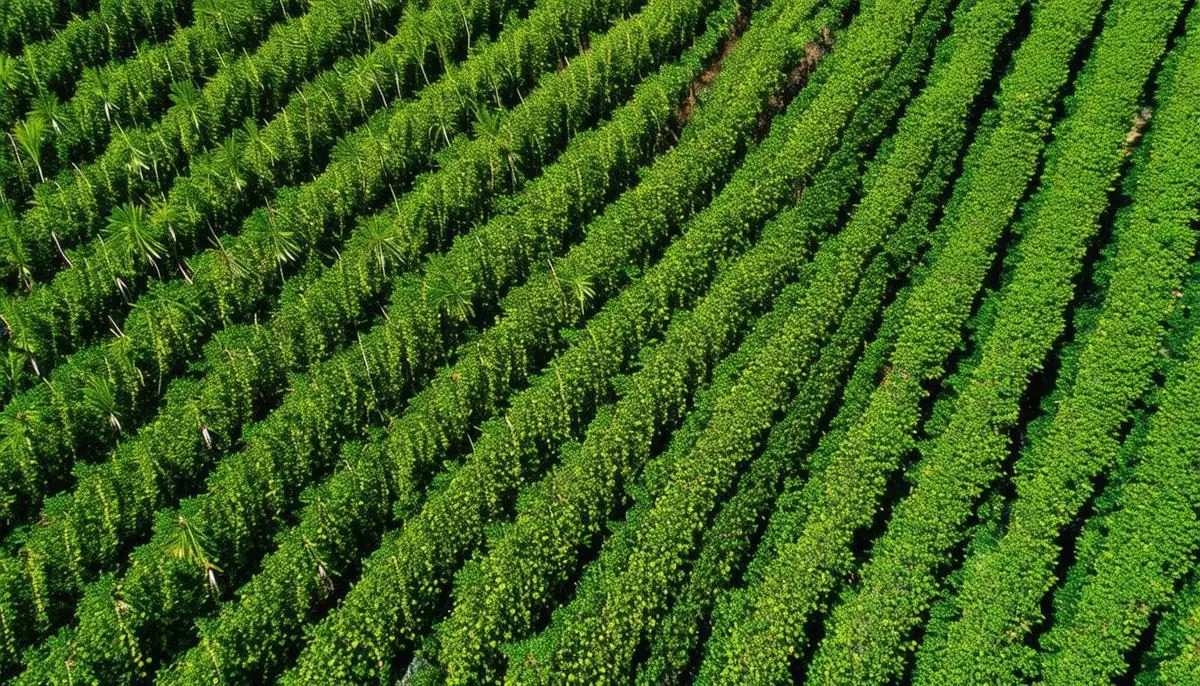
- Havkin-Frenkel D, Belanger FC. Handbook of Vanilla Science and Technology. 2nd ed. Wiley; 2018.
- Hending D, Andrianiaina A, Maxfield P, Rakotomalala L, Cotton S. The Use of Vanilla Plantations by Lemurs: Encouraging Findings for both Lemur Conservation and Sustainable Agroforestry in Madagascar. Int J Primatol. 2018;39(1):141-153.

